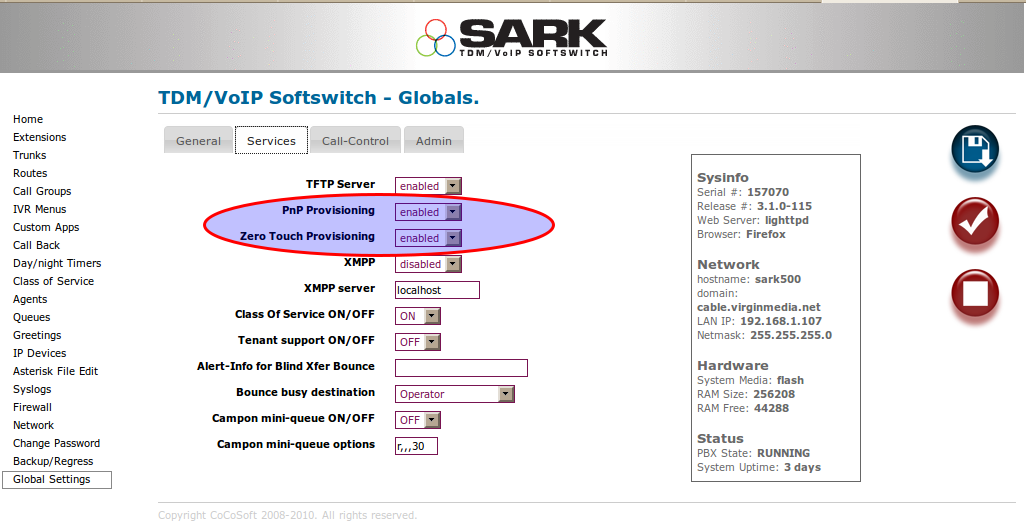ZTP
Contents
PnP and Zero Touch Provisioning (ZTP)
SARK V3 has on-board PnP and ZTP provisioning using a SIP Multicast listener/builder. This gives two large benefits for users of SIP phone models which are SIP PnP aware:-
* There is no need to run DHCP options or a modified DHCP server * Phones can be configured on-the-fly by the listener/builder
Supported phone types
In the initial delivery SARK V3 has support for both Snom and Yealink phones. Support for Gigaset phones is planned but likely only for the Intel based platforms.
Set-up
Set-up requires only two variables to be enabled. They are in Globals-> Services and they are called:-
* PnP * Zero Touch Provisioning.
PnP
PnP (or SIP Plug 'n Play) turns on the SIP Multicast listener. This allows SARK to asynchronously tell a SIP phone where its provisioning file is located without the need to modify the DHCP server or to run an on-board DHCP server.
ZTP
Zero Touch Provisioning works in tandem with PnP. When ZTP is enabled then SARK can not only inform a phone where its provisioning data is but it can build it on-the-fly before the phone requests it. When ZTP is turned on you can simply power up a PnP aware phone and SARK will see the phone, automatically create an extension for it in the SARK database, inform the phone where the provisioning data is and finally, regenerate Asterisk so that it also is aware of the new extension. Thus the phone will come up, be automatically provisioned and register with Asterisk. This is very useful for medium to large roll-outs because it needs no pre set-up or intervention.
It is normal only to run ZTP during intial system installation or when you have new phones to roll-out. The remainder of the time it should be switched off.
PnP/ZTP logic
In order to be able to run multiple PBX servers in the same subnet, it is not a good idea for the Multicast listener to blindly reply to any PnP aware phone which requests provisioning information. For this reason, unless ZTP is enabled, SARK will only respond to requests from phones for which it already has an entry in its database. It recognises individual phones by their MAC addresses. This mode of operation is much the same as regular DHCP 66 type provisioning; i.e. only phones which have been predefined to the system will be provisioned. In this way, multiple servers may all be listening for Multicasts and each can respond to its own group of phones without disrupting the other listeners.
